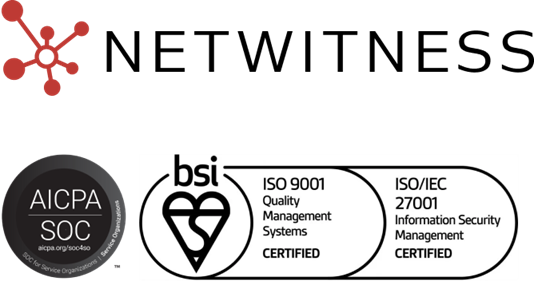What is Vulnerability Intelligence?
Vulnerability intelligence is the systematic collection, analysis, and application of information about security weaknesses in systems, applications, and networks to enable proactive risk mitigation. This discipline combines vulnerability threat intelligence with actionable insights about exploitability, attack patterns, and remediation priorities. Understanding vulnerability intelligence services and implementing managed vulnerability scanning programs enables organizations to identify and address security gaps before adversaries can exploit them for unauthorized access or system compromise.
Vulnerability intelligence involves gathering, analyzing, and contextualizing information about known security weaknesses, including Common Vulnerabilities and Exposures (CVEs), zero-day vulnerabilities, and misconfigurations that create exploitable attack surfaces. This goes beyond simple vulnerability identification to include threat context about which vulnerabilities are actively exploited, which pose the greatest risk to specific environments, and how to prioritize remediation efforts effectively.
Modern vulnerability intelligence services combine automated scanning capabilities with threat intelligence feeds to provide comprehensive visibility into attack surface intelligence vulnerabilities. These services help security teams understand not just what vulnerabilities exist, but which ones represent genuine threats based on current adversary tactics and organizational exposure.
Synonyms
- Threat Intelligence
- Cyber Threat Intelligence
- Cybersecurity Intelligence
- Threat and Vulnerability Intelligence (TVI)
Why Vulnerability Intelligence Matters
Failing to implement effective vulnerability intelligence programs can result in unpatched critical weaknesses, successful exploitation by attackers, and significant security incidents. Key reasons vulnerability threat intelligence is essential include:
- Proactive Risk Reduction: Identifying and remediating vulnerabilities before threat actors discover and exploit them for system compromise.
- Prioritized Remediation: Focusing limited security resources on vulnerabilities that pose the greatest actual risk rather than treating all weaknesses equally.
- Threat Context: Understanding which vulnerabilities are actively exploited in the wild and which are targeted by relevant threat actors.
- Compliance Support: Meeting regulatory requirements for vulnerability management and demonstrating systematic security assessment practices.
Effectively implementing vulnerability intelligence enables organizations to stay ahead of attackers by addressing security gaps systematically based on actual risk and threat landscape dynamics.
How Vulnerability Intelligence Works
Vulnerability intelligence programs typically follow a structured methodology:
- Asset Discovery: Identifying all systems, applications, and network components that comprise the attack surface requiring vulnerability assessment.
- Vulnerability Scanning: Using managed vulnerability scanning tools to systematically identify known security weaknesses across the identified attack surface.
- Threat Correlation: Enriching vulnerability data with threat intelligence about active exploitation, proof-of-concept availability, and adversary targeting patterns.
- Risk Prioritization: Ranking vulnerabilities based on exploitability, potential business impact, and likelihood of targeting by relevant threat actors.
- Remediation Tracking: Monitoring patch deployment and mitigation implementation to ensure identified vulnerabilities are addressed effectively.
Types of Vulnerability Intelligence
1. CVE Intelligence:
Information about publicly disclosed Common Vulnerabilities and Exposures including severity ratings, exploitation status, and remediation guidance.
2. Attack Surface Intelligence Vulnerabilities:
Comprehensive visibility into all exploitable weaknesses across external-facing and internal systems.
3. Zero-Day Vulnerability Intelligence:
Early warning about previously unknown security flaws before patches become available.
4. Exploit Intelligence:
Information about available exploit code, active exploitation campaigns, and attacker techniques targeting specific vulnerabilities.
Best Practices for Vulnerability Intelligence
- Deploy Managed Vulnerability Scanning: Implement continuous automated scanning across all assets to maintain current visibility into security weaknesses.
- Integrate Threat Intelligence: Combine vulnerability data with threat intelligence to understand which weaknesses pose the greatest actual risk.
- Establish Risk-Based Prioritization: Develop frameworks that consider exploitability, asset criticality, and threat landscape when prioritizing remediation.
- Maintain Asset Inventory: Keep accurate, current inventories of all systems and applications to ensure comprehensive vulnerability coverage.
- Track Remediation Metrics: Monitor time-to-patch and other key performance indicators to measure program effectiveness and improvement.
Related Terms & Synonyms
- Vulnerability Intelligence Services: Managed offerings that provide continuous vulnerability assessment, threat correlation, and remediation guidance.
- Vulnerability Threat Intelligence: Combined discipline that enriches vulnerability data with threat context about active exploitation and adversary targeting.
- Managed Vulnerability Scanning: Outsourced services that provide continuous automated vulnerability assessment across organizational attack surfaces.
- Vulnerability and Threat: Integrated approach examining both security weaknesses and the threat actors who might exploit them.
- Attack Surface Intelligence Vulnerabilities: Comprehensive understanding of all exploitable weaknesses across an organization’s external and internal attack surfaces.
- CVE: Common Vulnerabilities and Exposures, the standardized system for identifying and cataloging publicly known security vulnerabilities.
- Vulnerability Assessment: Systematic examination of systems and applications to identify security weaknesses requiring remediation.
People Also Ask
1. What is a CVE?
A CVE (Common Vulnerabilities and Exposures) is a standardized identifier assigned to publicly disclosed security vulnerabilities, providing a universal reference system that enables consistent tracking, discussion, and remediation of specific security flaws across the cybersecurity industry.
2. What are the common network security vulnerabilities?
Common network security vulnerabilities include unpatched systems, weak authentication mechanisms, misconfigured firewalls, unsecured protocols, open ports running unnecessary services, missing encryption, and inadequate network segmentation that allows lateral movement.
3. What are the common security threats to a network?
Common network security threats include malware infections, distributed denial-of-service attacks, man-in-the-middle interception, unauthorized access through compromised credentials, ransomware, insider threats, SQL injection, and advanced persistent threats exploiting unpatched vulnerabilities.




